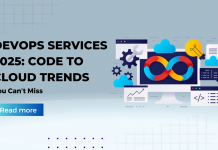The days of MLROs having to dedicate a significant amount of time to PEP screening are long gone. The conventional way to monitor the PEP databases by hand has always been a daunting task, and today, we have entered a world where risk management is accomplished using online PEP Risk Management technologies.
What are PEPs? Who identifies as a PEP? Is once a PEP always a PEP? To have an in-depth understanding, visit PEP Checks: The Comprehensive Guide to Screening Politically Exposed Persons for Businesses –
The journey from conventional to advanced monitoring
In order to manage PEP databases and facilitate the identification of possible dangers within AML compliance and business organizations, MLROs are increasingly turning to online PEP Risk Management systems. PEPs are seen as high-risk people who pose a threat to the community since they are vital members of the public realm. In the corporate sphere, PEP engagement can have detrimental effects like money laundering and issues with corruption. Businesses can avoid significant incidents and lower false favorable rates by implementing effective PEP check. Reducing false positives and ensuring that a PEP is not a PEP are the main goals of AML Watcher, a tool that identifies people at high risk.
How do regulatory frameworks help in managing the risk associated with PEPs?
The time duration of a person’s status as a Politically Exposed Person (PEP) varies depending on the jurisdiction and is determined by risk variables such as position seniority, informal influence, and present or past function. A risk-based strategy is recommended by US, UK, and EU regulations; FATF, FCA, and EU Directives require a 12-month inquiry time for PEPs. Financial institutions must put enhanced due diligence (EDD) procedures in place in order to comply with AML requirements and reduce the risk of money laundering and terrorist financing. These precautions include record-keeping, reporting, approval and monitoring, increased due diligence, risk identification, and monitoring. Companies need to have top management approval, screen clients against specialized databases, perform additional due diligence on high-risk PEPs, keep records for at least five years, and collaborate with law enforcement.
How could RCAs (Relatives and Close Associates) be a more significant threat?
Money laundering scandals that involve politically exposed persons (PEPs) are becoming more frequent, revealing the financial participation of wealthy and influential people in illegal activities. People in positions of power or prominence in the public sphere (PEPs) are more vulnerable to corruption and money laundering. Financial institutions must have a robust PEP compliance program that identifies and performs enhanced due diligence on PEPs to reduce financial crime risk and safeguard the financial system’s integrity.
Understanding Politically Exposed Persons related risks, laws, and expectations is essential for anti-money laundering (AML) compliance officers in order to establish an efficient program that controls PEP-related risks and guarantees regulatory compliance. Because of their propensity for bribery, corruption, and even terrorism, PEPs are viewed as high-risk candidates for money laundering. In order to avoid being discovered engaging in illicit activities, such as money transfers or asset concealment, using their names, PEPs may turn to family members and close friends. Organizations can monitor transaction activity for potentially unlawful conduct and better know the risks connected with PEPs by identifying and comprehending these links.
How is AML Watcher a go-to tool for compliance experts?
Potential employees (PEPs) must be found and screened by organizations in order to protect their finances and reputation. Screening assists in identifying high-risk individuals, such as family members and close friends, and evaluates the risk by considering variables such as their position, influence, and geography. When working with high-risk PEPs, enhanced due diligence (EDD) is required. This includes constant monitoring, examining wealth sources, and determining account objectives. Organizations should get senior management consent before beginning a business relationship with a PEP. Hence, a system should exist to monitor the relationship over time closely.
These claims are significant, but is there any solution that addresses all the pain points?
AML Watcher’s strong API guards against financial fraud and guarantees compliance. A thorough risk-based approach can be implemented more easily with the help of these instruments. Some organizations even monitor PEP accounts against unfavorable media in real time for proactive risk reduction. PEP-related records are to be preserved for a minimum of five years. It’s critical to notify law enforcement and authorities of any questionable transactions through robust softwares. Businesses may protect their finances and reputation by investing in PEP screening tools like AML Watcher Risk PEP Screening Tools. Through the system, integration can be implemented more easily with the help of these instruments.
“Visit AML Watcher to learn about product knowledge and efficient screening, verification, and identification services. With ten free screening attempts, get your 5-day free trial to have a robust experience of AML Watcher’s services.”








